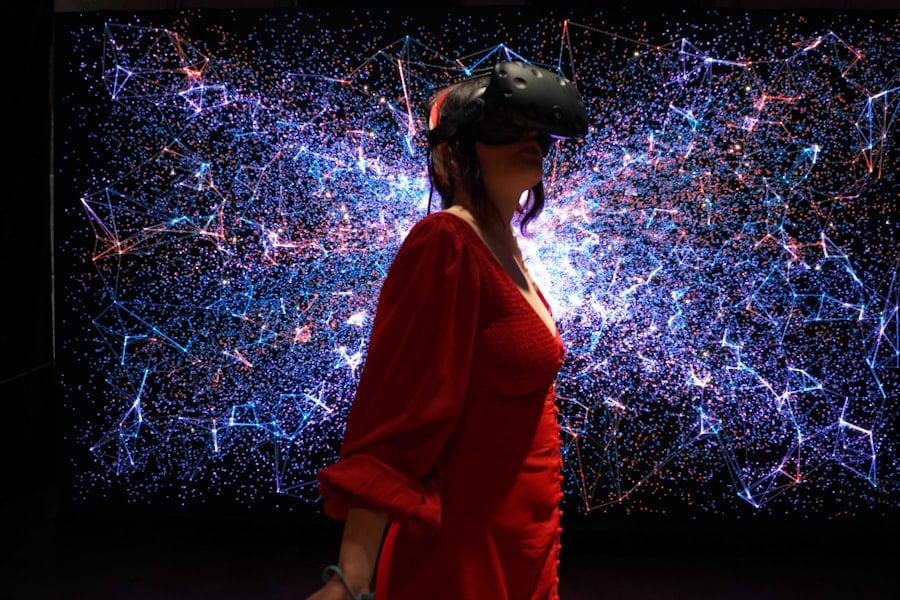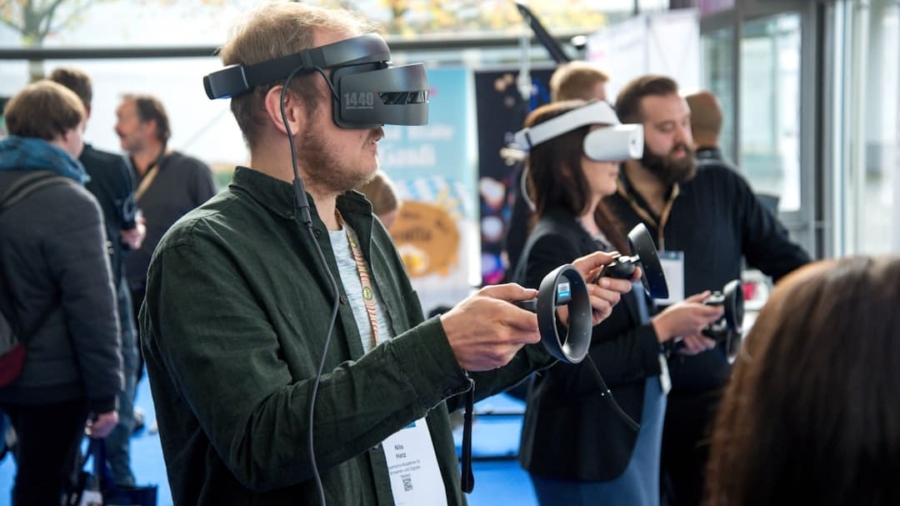Augmented Reality (AR) has emerged as a transformative technology, particularly in the realm of industrial software interfaces. By overlaying digital information onto the physical world, AR enhances the way users interact with complex systems and machinery. This technology is not merely a novelty; it represents a significant shift in how industries approach training, maintenance, and operational efficiency.
The integration of AR into industrial software interfaces allows for real-time data visualization, interactive training modules, and enhanced collaboration among teams, thereby streamlining processes that were once cumbersome and time-consuming. The evolution of AR technology has been fueled by advancements in hardware, such as smartphones, tablets, and specialized AR glasses, as well as improvements in software development. These advancements have made it feasible for industries to adopt AR solutions that cater to their specific needs.
For instance, manufacturing plants can utilize AR to provide workers with step-by-step assembly instructions projected directly onto the equipment they are working on. This not only reduces the likelihood of errors but also accelerates the learning curve for new employees. As industries continue to explore the potential of AR, its role in shaping industrial software interfaces becomes increasingly significant.
Key Takeaways
- Augmented reality enhances user experience and improves efficiency in industrial software interfaces.
- Advantages of using augmented reality include improved visualization, reduced errors, and enhanced training and maintenance processes.
- Challenges of implementing augmented reality in industrial software interfaces include high initial costs, technical limitations, and integration with existing systems.
- Successful case studies demonstrate how augmented reality improves productivity, reduces downtime, and enhances safety in industrial settings.
- Future trends in augmented reality for industrial software interfaces include advancements in wearable technology, 3D modeling, and remote assistance capabilities.
Advantages of Using Augmented Reality in Industrial Software Interfaces
The advantages of incorporating augmented reality into industrial software interfaces are manifold. One of the most notable benefits is the enhancement of training and onboarding processes. Traditional training methods often rely on manuals or static presentations, which can be less engaging and harder to retain.
In contrast, AR provides immersive experiences that allow trainees to visualize complex concepts and procedures in a more intuitive manner. For example, a technician learning to repair a machine can see virtual annotations that highlight specific components and provide contextual information about their functions. This hands-on approach not only improves comprehension but also boosts retention rates.
Another significant advantage of AR in industrial settings is its ability to facilitate remote assistance and collaboration.
This capability is particularly valuable in industries where specialized knowledge is required but may not be readily available on-site.
For instance, an engineer located thousands of miles away can use AR to overlay instructions or diagrams onto a technician’s view of a malfunctioning piece of equipment. This real-time guidance can drastically reduce downtime and improve problem-solving efficiency, ultimately leading to cost savings for the organization.
Challenges and Limitations of Implementing Augmented Reality in Industrial Software Interfaces

Despite its numerous advantages, the implementation of augmented reality in industrial software interfaces is not without challenges. One of the primary hurdles is the initial investment required for AR technology. Organizations must consider the costs associated with hardware acquisition, software development, and ongoing maintenance.
For many companies, especially smaller enterprises, these costs can be prohibitive. Additionally, there may be a steep learning curve associated with adopting new technologies, which can lead to resistance from employees who are accustomed to traditional methods. Another significant challenge lies in the integration of AR with existing systems and workflows.
Many industrial environments rely on legacy systems that may not be compatible with modern AR solutions. Ensuring seamless interoperability between new AR applications and established software can be a complex task that requires careful planning and execution. Furthermore, there are concerns regarding data security and privacy when using AR technologies that rely on cloud-based services or external networks.
Organizations must navigate these issues to ensure that sensitive information remains protected while still leveraging the benefits of augmented reality.
Case Studies of Successful Implementation of Augmented Reality in Industrial Software Interfaces
Several organizations have successfully implemented augmented reality in their industrial software interfaces, showcasing its potential to revolutionize operations. One notable example is Boeing, which has integrated AR into its aircraft assembly processes. By using AR glasses, technicians can access digital schematics and assembly instructions overlaid on the physical components they are working on.
This approach has led to a significant reduction in assembly time and errors, demonstrating how AR can enhance precision and efficiency in complex manufacturing environments. Another compelling case study comes from Siemens, which has utilized AR for maintenance and repair tasks within its manufacturing facilities. By equipping technicians with AR devices that display real-time data and step-by-step instructions, Siemens has improved its maintenance processes significantly.
Technicians can visualize equipment performance metrics alongside physical machinery, allowing them to diagnose issues more effectively and implement solutions faster. This integration of AR not only streamlines operations but also empowers employees with the information they need to perform their jobs more effectively.
Future Trends and Developments in Augmented Reality for Industrial Software Interfaces
As augmented reality technology continues to evolve, several trends are emerging that will shape its future applications in industrial software interfaces. One such trend is the increasing use of artificial intelligence (AI) in conjunction with AR. AI algorithms can analyze vast amounts of data to provide predictive insights that enhance the functionality of AR applications.
For instance, AI could help identify potential equipment failures before they occur by analyzing historical performance data and providing technicians with proactive maintenance recommendations through AR interfaces. Another trend is the growing emphasis on user experience (UX) design in AR applications. As industries adopt AR solutions, there is a recognition that user-friendly interfaces are crucial for maximizing adoption and effectiveness.
Future developments will likely focus on creating more intuitive interactions that minimize cognitive load for users. This could involve advancements in gesture recognition, voice commands, and haptic feedback systems that make it easier for workers to engage with AR content seamlessly while performing their tasks.
Best Practices for Designing and Implementing Augmented Reality in Industrial Software Interfaces

To maximize the benefits of augmented reality in industrial software interfaces, organizations should adhere to several best practices during the design and implementation phases. First and foremost, it is essential to conduct thorough needs assessments to identify specific use cases where AR can add value. Engaging with end-users during this process ensures that the solutions developed are tailored to their requirements and workflows.
Additionally, organizations should prioritize iterative development and testing when creating AR applications. By employing agile methodologies, teams can gather feedback from users early in the development process and make necessary adjustments before full-scale deployment. This approach not only enhances user satisfaction but also reduces the risk of costly mistakes that could arise from launching a poorly designed application.
Furthermore, providing comprehensive training and support for employees is critical for successful adoption. Organizations should invest in training programs that familiarize users with AR technology and its applications within their specific roles. Ongoing support mechanisms, such as help desks or user forums, can also facilitate knowledge sharing and troubleshooting among employees.
The Impact of Augmented Reality on Efficiency and Productivity in Industrial Settings
The impact of augmented reality on efficiency and productivity within industrial settings is profound and multifaceted. By providing real-time access to information and guidance, AR enables workers to perform tasks more quickly and accurately than traditional methods would allow. For instance, studies have shown that technicians using AR for assembly tasks can complete their work up to 30% faster compared to those relying solely on paper manuals or verbal instructions.
Moreover, augmented reality fosters a culture of continuous improvement by enabling organizations to collect data on employee performance and task execution. This data can be analyzed to identify bottlenecks or inefficiencies within workflows, allowing companies to make informed decisions about process optimization. As a result, organizations that leverage AR technology often experience not only increased productivity but also enhanced employee satisfaction due to reduced frustration associated with complex tasks.
The Role of Augmented Reality in Shaping the Future of Industrial Software Interfaces
As industries continue to navigate an increasingly complex landscape characterized by rapid technological advancements, augmented reality stands out as a pivotal force shaping the future of industrial software interfaces. Its ability to bridge the gap between digital information and physical environments offers unprecedented opportunities for enhancing training, maintenance, collaboration, and overall operational efficiency. While challenges remain regarding implementation costs and integration with existing systems, the successful case studies from leading organizations demonstrate that the benefits far outweigh these obstacles.
Looking ahead, the convergence of augmented reality with artificial intelligence and user-centered design principles will further amplify its impact across various industrial sectors. As companies embrace these innovations, they will not only improve their operational capabilities but also empower their workforce with tools that enhance productivity and job satisfaction. Ultimately, augmented reality is poised to redefine how industries approach their software interfaces, paving the way for a more efficient and connected future.
In a recent article on enicomp.com, readers can learn about the best software for 2D animation, which can be a valuable tool for creating engaging visual content in industrial software interfaces. By incorporating 2D animation into augmented reality applications, developers can enhance user experience and improve overall usability.

